Wake Expansion and the Finite Blade Functions for Horizontal-Axis Wind Turbines
Abstract
:1. Introduction
- (1)
- The vast majority of wind turbine codes use Prandtl’s tip loss factor which assumes . The modern form of was developed by Glauert [4] and its implementation is described by Hansen [1] and Schmitz [2]. The formula for is computationally cheap and this overrides its limitations of being derived from modelling the trailing vorticity as two-dimensional sheets of vorticity. Modifications to Prandtl’s formulation have been developed by a number of authors, including Shen et al. [5]. A more recent example of this type of analysis is by [6]. None of these modificatons address the effects of wake expansion.
- (2)
- It is common in propeller analysis, e.g., Epps [7], to use analytical approximations to the complicated Kawada-Hardin (KH) equations for the velocities due to helical vortices of constant pitch and radius. Wood et al. [8] showed that approached and derived from the KH equations, as increased. Significant differences, however, occurred for . Wood et al. [9] give a brief history of these methods and compare three approximations to the KH equations for a range of vortex pitch applicable to wind turbines and propellers. They showed the best of the approximations (which is used here) is accurate and easy to incorporate in a BEMT code.
- (3)
- Wimshurst and Willden [10] and Schmitz and Maniaci [11] solved free-wake models to calculate and . The former were the first to show a difference between and . This work was followed by Wimshurst and Willden [12] and Wimshurst and Willden [13] using further detailed computational fluid dynamics analysis of the flow over the blades. Free-wake models account for wake expansion which is significant for turbines near maximum power, but are computationally demanding in comparison to BEMT.
2. The Equations for the Induced Velocities and Finite Blade Functions
2.1. Prandtl’s Tip Loss Factor
2.2. The Kawada-Hardin Equations
2.3. Okulov’s Approximate Equation for
2.4. Using the Biot-Savart Law
3. Results and Discussion
3.1. The Finite Blade Functions, and
3.2. The Radial Velocity and
4. Conclusions
Funding
Data Availability Statement
Conflicts of Interest
References
- Hansen, M.O.L. Aerodynamics of Wind Turbines, 2nd ed.; Earthscan: London, UK, 2015. [Google Scholar]
- Schmitz, S. Aerodynamics of Wind Turbines: A Physical Basis for Analysis and Design; John Wiley & Sons: Hoboken, NJ, USA, 2020. [Google Scholar]
- Limacher, E.J.; Wood, D.H. An impulse-based derivation of the Kutta-Joukowsky equation for wind turbine thrust. Wind Energy Sci. 2021, 6, 191–201. [Google Scholar] [CrossRef]
- Glauert, H. Aerodynamic Theory: Division L, Airplane Propellers; Springer: Berlin/Heidelberg, Germany, 1935; Chapter XI. [Google Scholar]
- Shen, W.Z.; Mikkelsen, R.; Srensen, J.N.; Bak, C. Tip vortex corrections for wind turbine computations. Wind Energy 2005, 8, 457–475. [Google Scholar] [CrossRef]
- Pirrung, G.R.; Van der Laan, M.P.; Ramos-García, N.; Meyer Forsting, A.R. A simple improvement of a tip loss model for actuator disc simulations. Wind Energy 2020, 23, 1154–1163. [Google Scholar] [CrossRef]
- Epps, B. On the rotor lifting line wake model. J. Ship Prod. Des. 2017, 57, 181–201. [Google Scholar] [CrossRef]
- Wood, D.H.; Okulov, V.L.; Bhattacharjee, D. Direct calculation of wind turbine tip loss. Renew. Energy 2016, 95, 269–276. [Google Scholar] [CrossRef] [Green Version]
- Wood, D.H.; Okulov, V.L.; Vaz, J.R.P. Calculation of the induced velocities in lifting line analyses of propellers and turbines. Ocean. Eng. 2021, 235, 109337. [Google Scholar] [CrossRef]
- Wimshurst, A.; Willden, R.H.J. Analysis of a tip correction factor for horizontal axis turbines. Wind Energy 2017, 20, 1515–1528. [Google Scholar] [CrossRef]
- Schmitz, S.; Maniaci, D.C. Methodology to determine a tip-loss factor for highly loaded wind turbines. AIAA J. 2017, 55, 341–351. [Google Scholar] [CrossRef]
- Wimshurst, A.; Willden, R.H.J. Computational observations of the tip loss mechanism experienced by horizontal axis rotors. Wind Energy 2018, 21, 544–557. [Google Scholar] [CrossRef]
- Wimshurst, A.; Willden, R. Spanwise flow corrections for tidal turbines. Int. Mar. Energy J. 2018. [Google Scholar] [CrossRef]
- Vaz, J.R.; Okulov, V.L.; Wood, D.H. Finite blade functions and blade element optimization for diffuser-augmented wind turbines. Renew. Energy 2021, 165, 812–822. [Google Scholar] [CrossRef]
- Van Kuik, G.A. On the velocity at wind turbine and propeller actuator discs. Wind Energy Sci. 2020, 5, 855–865. [Google Scholar] [CrossRef]
- Wood, D.H.; Limacher, E.L. Some effects of flow expansion on the aerodynamics of horizontal-axis wind turbines. Wind Energy Sci. Discuss. 2021, 1–21. [Google Scholar] [CrossRef]
- Kawada, S. Induced velocity by helical vortices. J. Aeronaut. Sci. 1936, 36, 86–87. [Google Scholar] [CrossRef]
- Hardin, J.C. The velocity field induced by a helical vortex filament. Phys. Fluids 1982, 25, 1949–1952. [Google Scholar] [CrossRef]
- Kawada, S. Calculation of Induced Velocity by Helical Vortices and Its Application to Propeller Theory; Technical Report 172; Aeronautical Research Institute, Tokyo Imperial University: Tokyo, Japan, 1939; Available online: http://repository.tksc.jaxa.jp/pl/dr/IS4146951000/en (accessed on 1 November 2021).
- Fukumuto, Y.; Okulov, V.L.; Wood, D.H. The contribution by Kawada to the analysis of the velocity induced by a helical vortex filament. Appl. Mech. Rev. 2015, 674, 060801-1–060801-6. [Google Scholar] [CrossRef]
- Okulov, V.L.; Sørensen, J.N. The self-induced motion of a helical vortex. J. Fluid Mech. 2020, 883. [Google Scholar] [CrossRef]
- Okulov, V.L. On the stability of multiple helical vortices. J. Fluid Mech. 2004, 521, 319–342. [Google Scholar] [CrossRef]
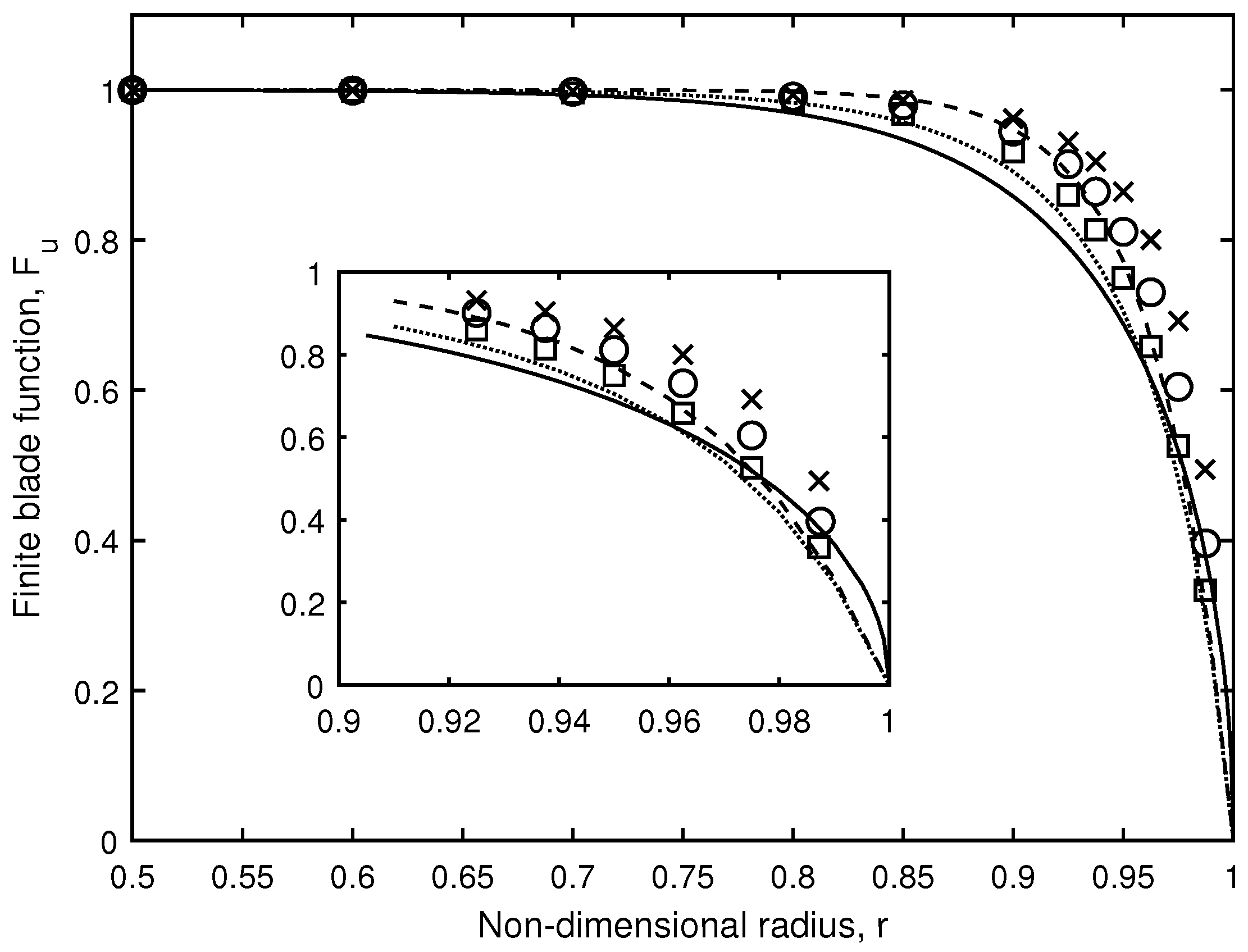
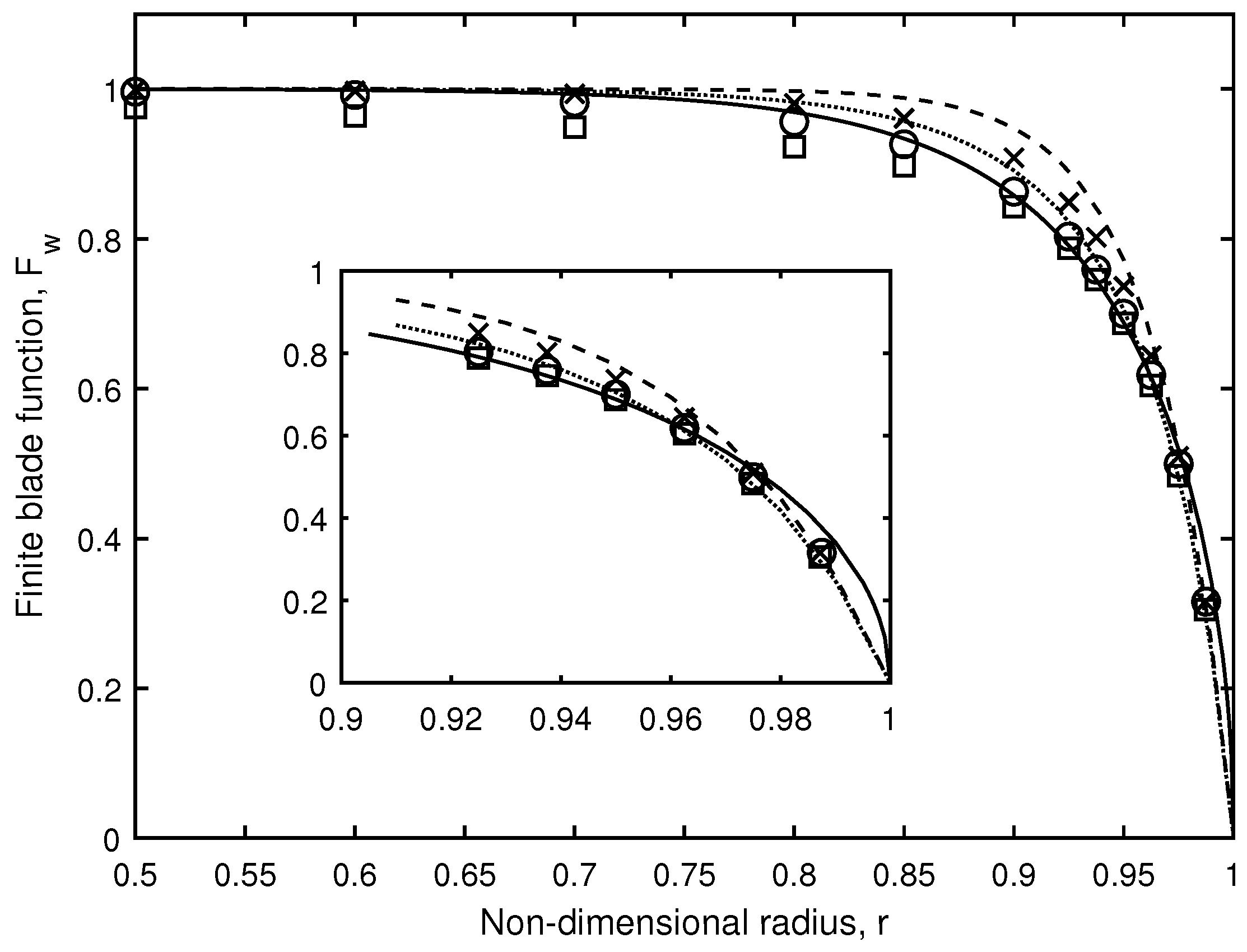
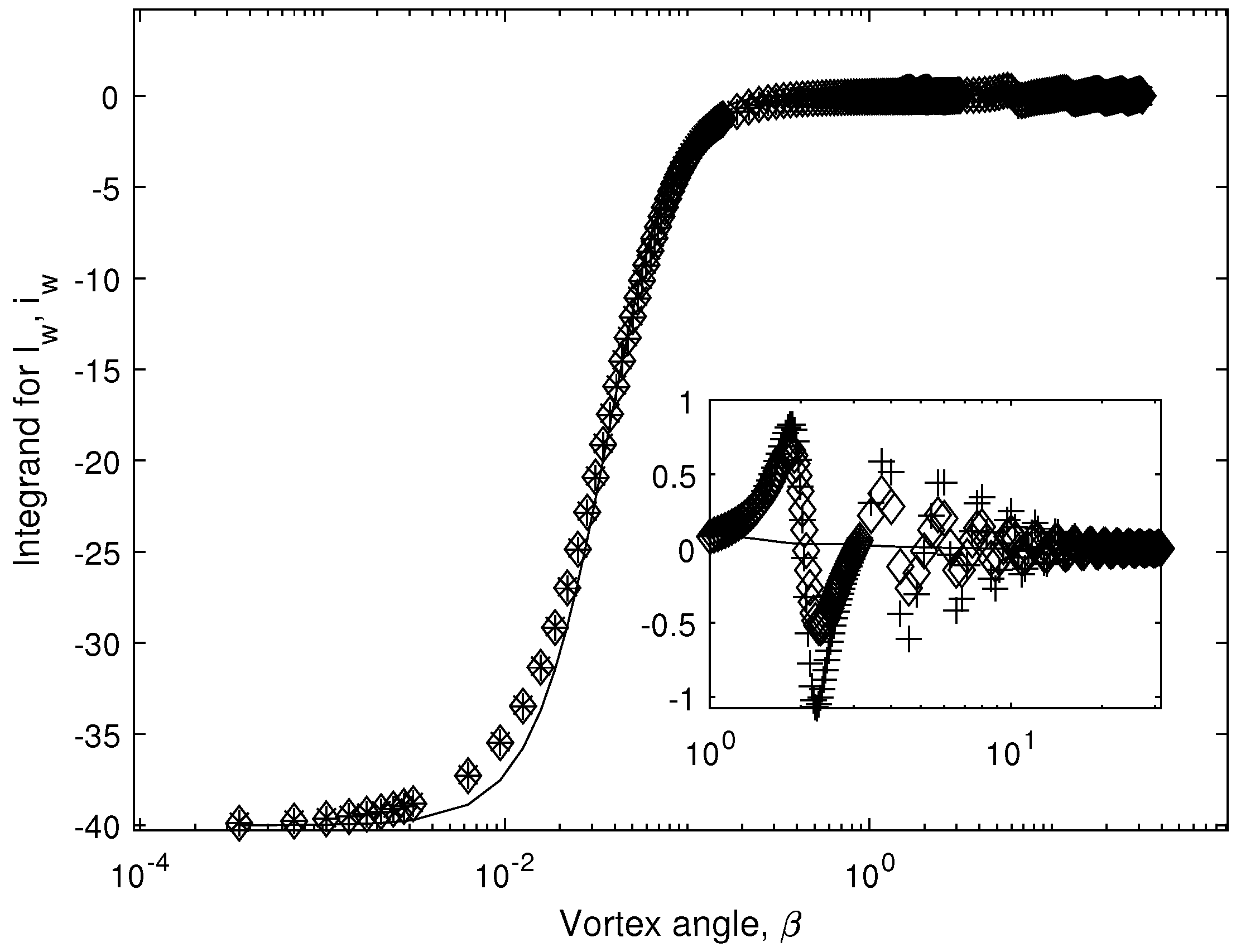

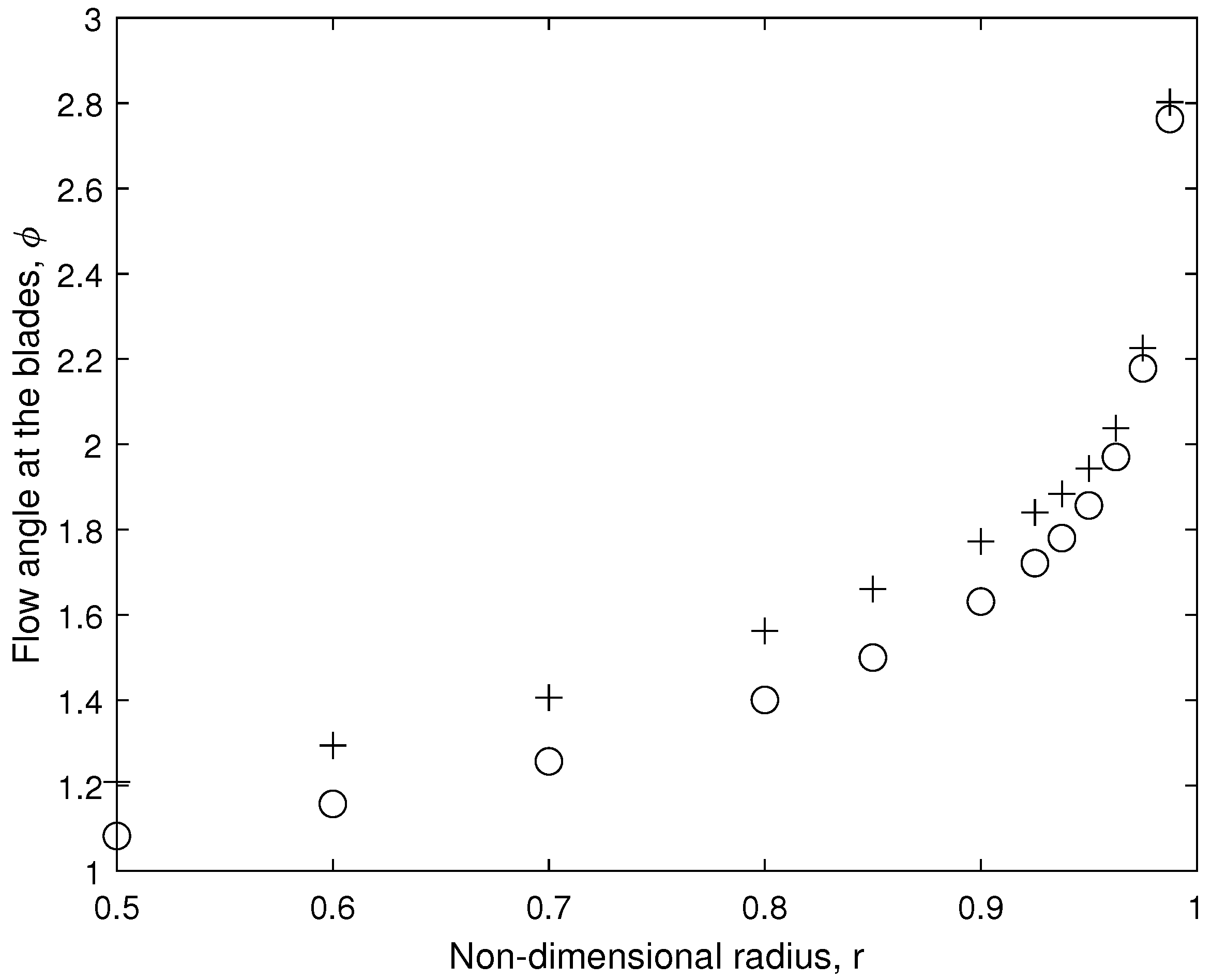
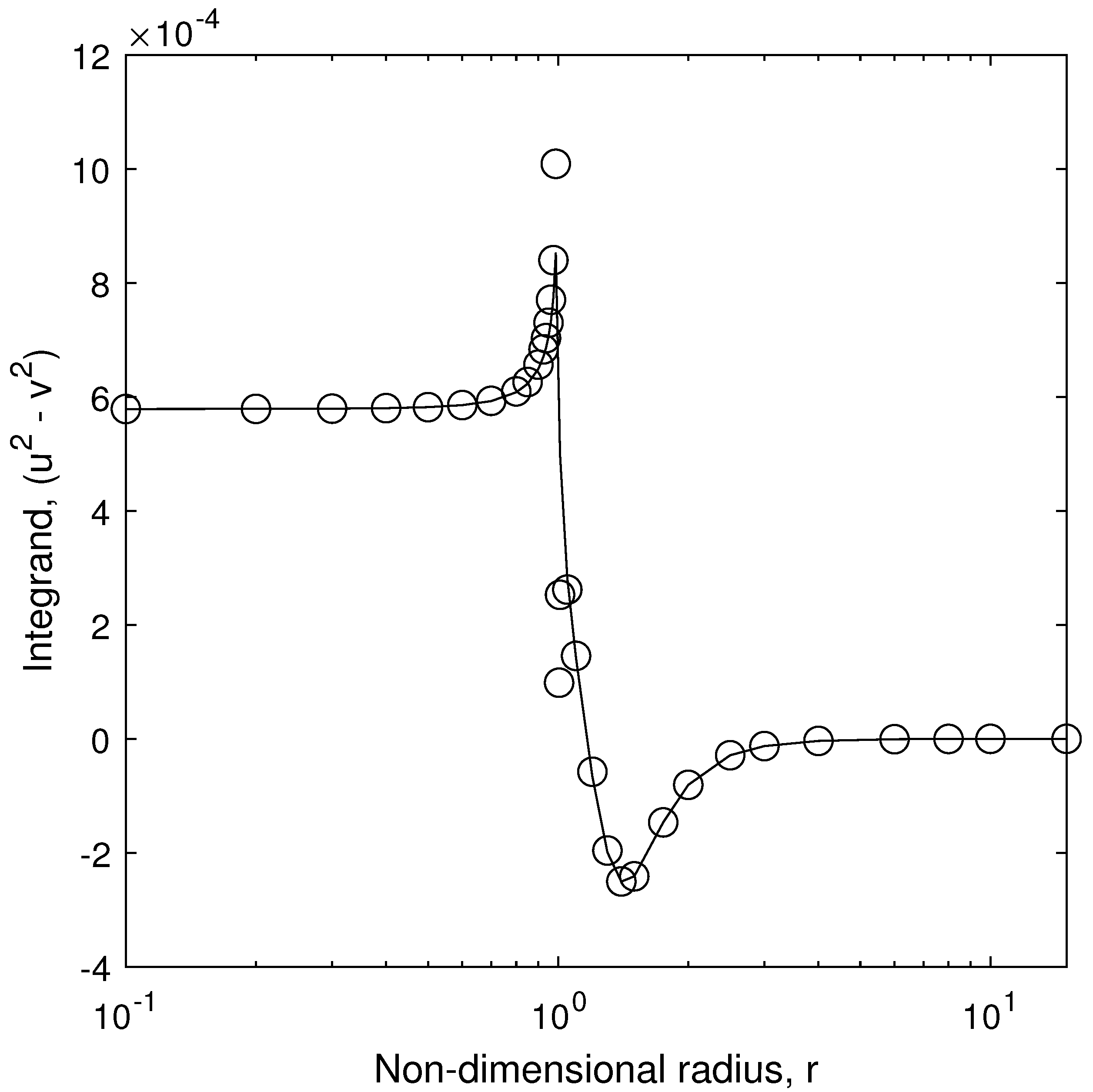
| p | k | ||||
|---|---|---|---|---|---|
| 0.10 | 1.597 | 0.4947 | 7.13 | 0.557 | 0.866 |
| 0.05 | 1.592 | 0.2482 | 14.28 | 0.556 | 0.864 |
Publisher’s Note: MDPI stays neutral with regard to jurisdictional claims in published maps and institutional affiliations. |
© 2021 by the author. Licensee MDPI, Basel, Switzerland. This article is an open access article distributed under the terms and conditions of the Creative Commons Attribution (CC BY) license (https://creativecommons.org/licenses/by/4.0/).
Share and Cite
Wood, D. Wake Expansion and the Finite Blade Functions for Horizontal-Axis Wind Turbines. Energies 2021, 14, 7653. https://doi.org/10.3390/en14227653
Wood D. Wake Expansion and the Finite Blade Functions for Horizontal-Axis Wind Turbines. Energies. 2021; 14(22):7653. https://doi.org/10.3390/en14227653
Chicago/Turabian StyleWood, David. 2021. "Wake Expansion and the Finite Blade Functions for Horizontal-Axis Wind Turbines" Energies 14, no. 22: 7653. https://doi.org/10.3390/en14227653
APA StyleWood, D. (2021). Wake Expansion and the Finite Blade Functions for Horizontal-Axis Wind Turbines. Energies, 14(22), 7653. https://doi.org/10.3390/en14227653






